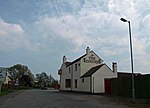Hatfield Moors
Sites of Special Scientific Interest in South YorkshireSites of Special Scientific Interest notified in 1954

Hatfield Moors (grid reference SK250950) is a 1400.7 hectare (3461.1 acre) biological site of Special Scientific Interest in South Yorkshire. The site was notified in 1954. The site is managed by Natural England. In The Gentleman's Magazine 31 August 1727, George Stovin made reference to Hatfield Moor: "Here is great plenty of furze buſhes, and variety of game, ſuch as hares, foxes, kites, eagles, curlews, ducks and geeſe; there is no houſe or cottage near it, and but a few old oaks, fallows, and birch; the ſouse is a little ſtud-bound one, and ſeems ready to fall".
Excerpt from the Wikipedia article Hatfield Moors (License: CC BY-SA 3.0, Authors, Images).Hatfield Moors
Blenheim Road, Doncaster Hatfield
Geographical coordinates (GPS) Address External links Nearby Places Show on map
Geographical coordinates (GPS)
| Latitude | Longitude |
|---|---|
| N 53.546097 ° | E -0.935142 ° |
Address
Hatfield Moors
Blenheim Road
DN7 6DE Doncaster, Hatfield
England, United Kingdom
Open on Google Maps










